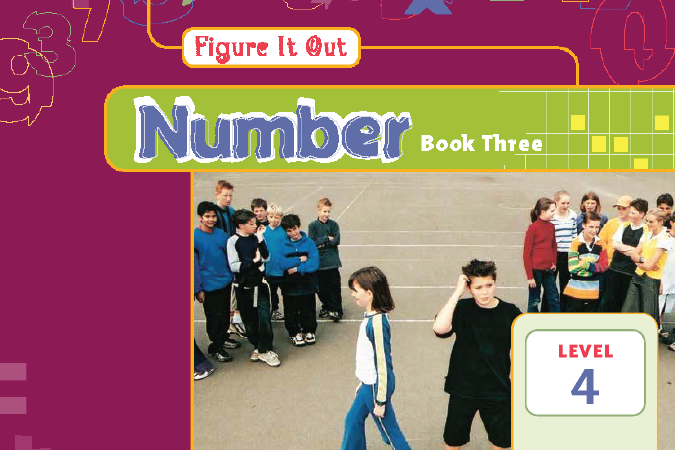Going for gold!
This is a level 4 number link activity from the Figure It Out series. It is focused on ordering decimals to 3 decimal places and adding and subtracting decimal numbers. A PDF of the student activity is included.

About this resource
Figure It Out is a series of 80 books published between 1999 and 2009 to support teaching and learning in New Zealand classrooms
This resource provides the teachers' notes and answers for one activity from the Figure It Out series. A printable PDF of the student activity can be downloaded from the materials that come with this resource.
Specific learning outcomes:
- Order decimals to 3 decimal places.
- Add and subtract decimal numbers.
Going for gold!
Achievement objectives
NA4-2: Understand addition and subtraction of fractions, decimals, and integers.
Required materials
- FIO, Link, Number, Book Three, "Going for gold!" page 12
See Materials that come with this resource to download:
- Going for gold activity (.pdf)
Activity
In this activity, the students order and add decimals to thousandths. Bridging material on decimals to three decimal places can be found in Number, Book Two of the Figure It Out series, on pages 17, 18–19, and 20.
Care is needed in distinguishing time and decimals because time is not always a decimal. For example, 5 hours 57 minutes is not 5.57 because there are 60 minutes in one hour. 5 hours and 57 minutes is 5 hours and 57 out of 60 minutes, that is, 557/60 hours. This is almost 6 hours. 57/60 as a decimal is 0.95, so 5 hours 57 minutes as a decimal is 5.95 hours. In this activity, tenths, hundredths, and thousandths of seconds are decimals and can be treated as any other decimal.
In a swimming medley relay, four swimmers race as a team. For example, the first swimmer swims 100 metres backstroke, the second swimmer 100 metres butterfly, the next swimmer 100 metres breaststroke, and the final swimmer 100 metres freestyle. To answer question 2, the students need to add the times of the two legs to find the order after the butterfly leg and then find the difference between the times of the fastest team and Gisborne at this stage to find out how much time Gisborne has to make up.
You could extend this activity by asking:
- “Suppose the eight swimmers in question 1 who did not make the final want to race and see who would get places ninth, tenth, eleventh, twelfth, and so on. Using the same method, what lane order would they be in?”
The students could design a computer spreadsheet for recording a medley competition and other swimming events. Challenge them to design the spreadsheet so that it will work out the lane positions automatically.
1.
Lane 1 James
Lane 2 Pete
Lane 3 Bill
Lane 4 Anaru
Lane 5 Matiu
Lane 6 Tama
Lane 7 Lain
Lane 8 Karl
2.
a. Levin (116.547)
Hastings (117.268)
Gisborne (118.030)
Hamilton (118.754)
Manakau (119.183)
Taupo (119.639)
Pakuranga (120.219)
Bulls (122.420)
b. They had to make up more than 1.483 seconds to win. (For example, they would win if they swam 1.484 seconds faster than Levin over the last two legs.)
The quality of the images on this page may vary depending on the device you are using.


